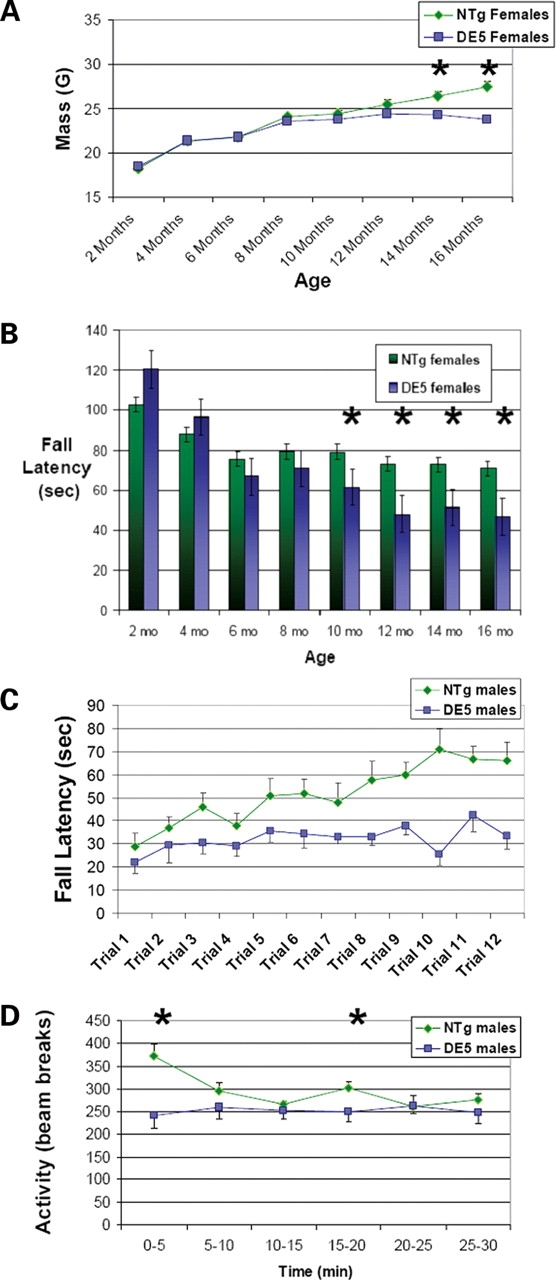Figure 6.

DE5 mice demonstrate failure to gain weight and motor abnormalities. (A) DE5 females (n = 13) demonstrate a failure to gain weight relative to non-transgenic littermates (n = 11) beginning at 14 months of age. DE5 males (n = 7) also failed to gain weight relative to non-transgenics (n = 10) (non-transgenic: 33.8 ± 1.06 g, DE5: 29.57 ± 0.57 g; body mass at 16 months of age ± SEM; P = 0.007, t-test). (B) Longitudinal analysis of female DE5 mice (n = 13) and non-transgenic littermates (n = 11) reveals a progressive deficit in rotarod performance beginning at 10 months of age and continuing through 16 months. Significance was determined by two-way repeated measures ANOVA at each time period. (C) Naïve, 16-month-old male DE5 mice (n = 9) show a marked deficit in rotarod performance relative to non-transgenic littermates (n = 10). (D) Naïve, male DE5 mice (n = 9) are hypoactive relative to non-transgenic littermates (n = 10) tested at 16 months of age. Measurements of activity in 5 min time bins revealed significant hypoactivity from 0 to 5 min and from 15 to 20 min. Total activity > 30 min was also decreased (P = 0.021). Hypoactivity was not detected when animals were tested longitudinally beginning at 2 months. All values are expressed as mean ± SEM. NTg, non-transgenic. *P < 0.05.
